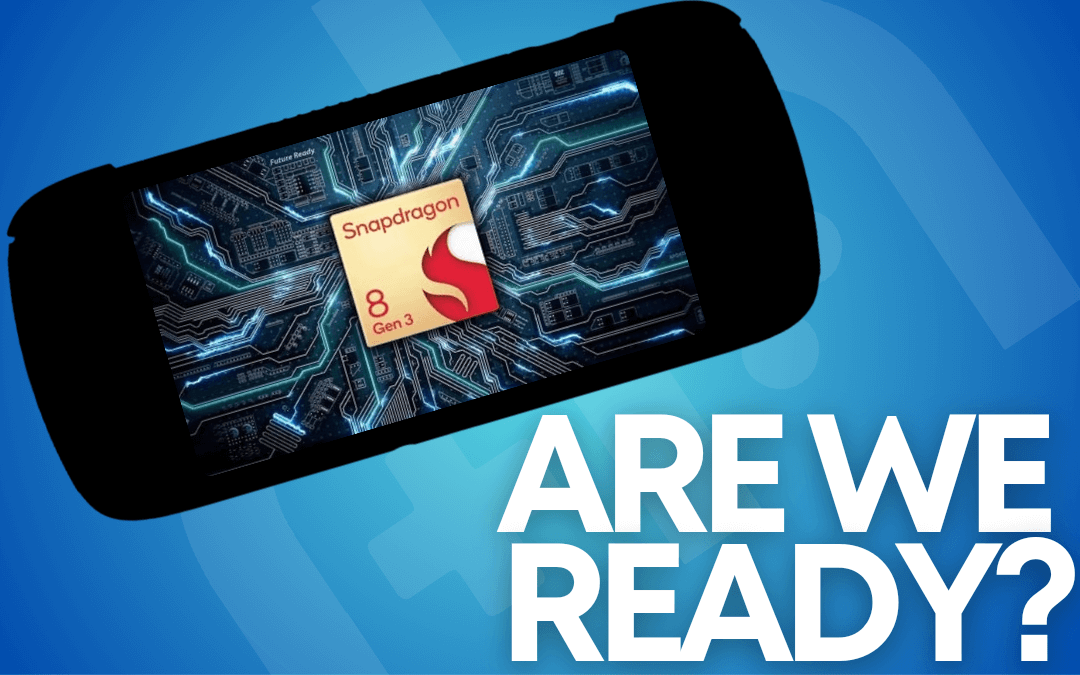When it comes to chipmakers in the handheld market, you can essentially have your pick of what you’d like. Choice of brand, choice of performance, choice of price, and more. One company that’s been notably absent from most of this has been Qualcomm. Their chips have been seen in only a couple handhelds up until this point: the Odin and it’s 845, the G Cloud and its 720G, or the Pimax Portal with a Snapdragon XR2. But with the recent announcement of the Ayaneo Pocket S using the G3x Gen 2, and the Odin 2 using the Snapdragon 8 Gen 2, a lot of attention has been put towards what Snapdragon processors could mean towards the handheld market. And with all of the talk around the Snapdragon 8 Gen 3, it’s fair to see why.
The Snapdragon 8 Gen 2 is already a monstrous chip for emulation and daily use. Eight power-efficient, powerful cores paired with the Adreno 740 GPU? You could run everything up to Switch emulation if you wanted to on this thing. However, the Snapdragon 8 Gen 3 goes a little bit further. It retains the 8 cores but makes them all a bit faster by upping their clock speed. Importantly it also upgrades the GPU to the new Adreno 750. While those changes might not sound like a lot on paper, it has been seen on Geekbench that scores are showing this new chip as being anywhere from 20 to 80 percent faster than its predecessor. So while that’s great for physical chip performance, what does that mean outside of benchmarks?
![]()
Yes, it will be faster (obviously), but we have to ask, will it be hotter? Will it use up more battery? Devices with the Snapdragon 8 Gen 2, like the Odin 2, have fans in them to maintain temperatures and performance. Will the 8 Gen 3 need this – or even more? You put this new chip in a handheld, and it will likely eat every piece of software on Android up for lunch, and still have room for dessert. At this point, even with the 8 Gen 2, the cap for performance isn’t in Android anymore. Rather, what can it do with Windows or Linux? The performance of these chips may soon end up being dictated by what they can do outside of their original OS, and I personally can’t wait to see it.
If Qualcomm keeps pushing its chips further like this in the coming years, don’t worry about Switch or PS2 emulation. Instead wonder when you can play Skyrim through Windows. With all of your mods.
What did you think of this article? Let us know in the comments below, and chat with us in our Discord!
This page may contain affiliate links, by purchasing something through a link, Retro Handhelds may earn a small commission on the sale at no additional cost to you.

I wouldn’t say everything up to Switch. Xbox/360, PS3, WillU will not work well. I believe.